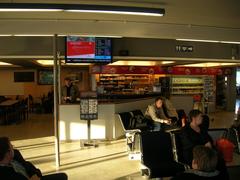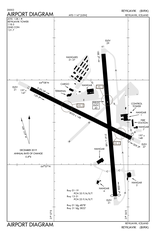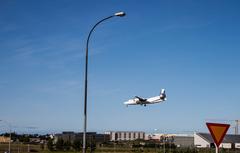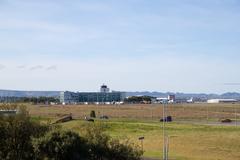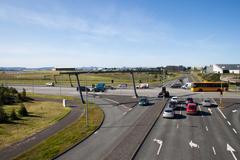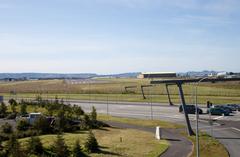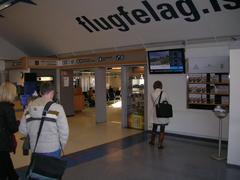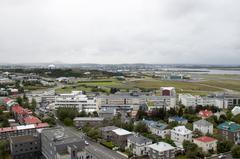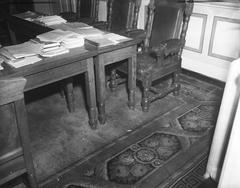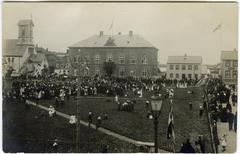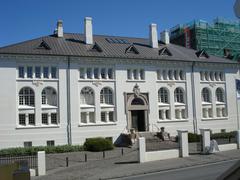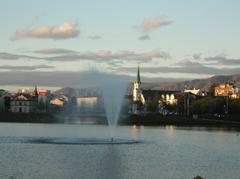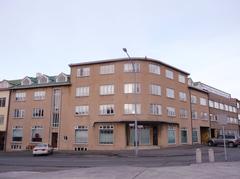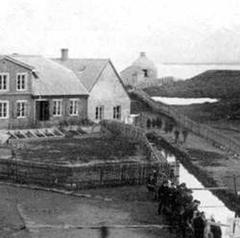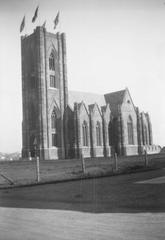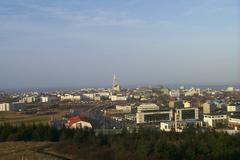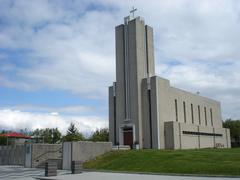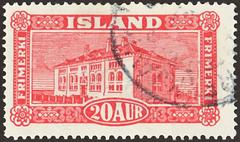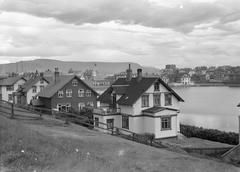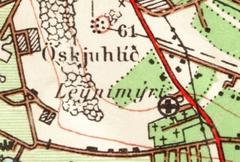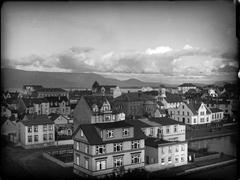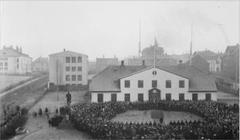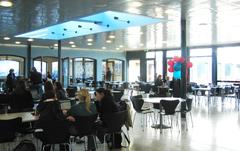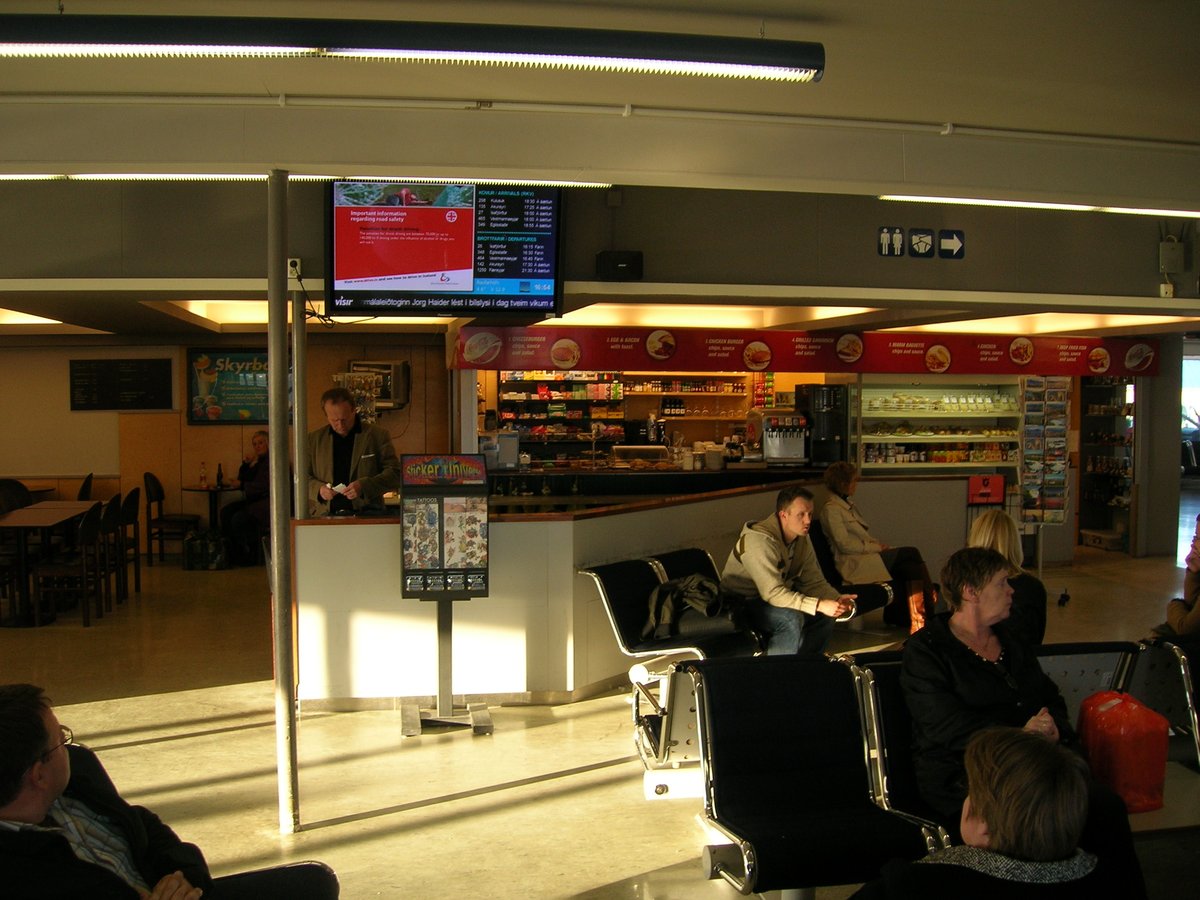
Reykjavík Airport Visiting Hours, Tickets, and Travel Guide
Date: 14/06/2025
Introduction
Reykjavík Airport (IATA: RKV, ICAO: BIRK) serves as a vital gateway to Iceland’s dramatic landscapes, distinctive culture, and domestic destinations. Located just 2 kilometers from Reykjavík’s city center, the airport is the main hub for domestic flights and connections to Greenland and the Faroe Islands, handling approximately 330,000 passengers annually. Steeped in aviation history, Reykjavík Airport has evolved from its early 20th-century origins and World War II military significance into a modern facility at the heart of Iceland’s transportation network. This comprehensive guide provides detailed information on the airport’s history, visiting hours, ticketing, facilities, accessibility, and nearby attractions, ensuring travelers are well-prepared for their Icelandic journey (Icelandair: Flying since 1937; Reykjavik Airport Guide; Guide to Iceland).
Table of Contents
- Early Beginnings and Pre-War Aviation
- World War II and the Construction of Reykjavík Airport
- Postwar Development and Domestic Aviation Hub
- Infrastructure Expansion and Modernization
- Cultural and Social Significance
- Visiting Reykjavík Airport: Hours, Tickets, and Travel Tips
- Notable Events and Milestones
- Reykjavík Airport in the 21st Century
- Frequently Asked Questions (FAQ)
- Conclusion
- Practical Visitor Information
- Airlines, Destinations, and Facilities
- Nearby Attractions and Tourism Integration
- Safety, Community Impact, and Operational Flexibility
- Summary and Key Information
- Sources and Official Links
Early Beginnings and Pre-War Aviation
Reykjavík Airport traces its roots to the dawn of aviation in Iceland. The first local airline, Flugfélag Íslands, was founded in 1919, initially operating a British-built Avro 504K biplane from a field that would later become the airport’s site. Early air operations struggled due to limited infrastructure and challenging weather, but the need for a reliable airfield in Reykjavík grew as aviation technology advanced and the demand for air travel increased (Wikipedia: Air transport in Iceland; Icelandair: Flying since 1937).
World War II and the Construction of Reykjavík Airport
The airport’s pivotal transformation occurred during World War II. In 1940, British forces occupied Iceland to secure the North Atlantic, constructing an airfield in the Vatnsmýri area of Reykjavík. This military-driven development introduced innovative construction methods, such as steel runway plates for rapid assembly. After the war, the British formally transferred control of the airport to Iceland in 1946, marking its transition from a military asset to the nation’s primary civilian aviation hub (Icelandair: Flying since 1937; Online Museum: History of Aviation in Iceland).
Postwar Development and Domestic Aviation Hub
With the introduction of land-based aircraft in the late 1940s, Reykjavík Airport enabled regular domestic flights, replacing the earlier reliance on flying boats. The airport’s central location made it the focal point for connecting the capital with Iceland’s remote regions. Major airlines such as Flugfélag Akureyrar (later Flugfélag Íslands, now Icelandair) established Reykjavík as their operational base, supported by improved aviation fuel infrastructure and expanded routes (Online Museum: History of Aviation in Iceland; Wikipedia: Air transport in Iceland).
Infrastructure Expansion and Modernization
Throughout the latter 20th century, Reykjavík Airport underwent significant upgrades. Runways and terminals were expanded to accommodate larger aircraft and increasing passenger numbers. Despite the opening of Keflavík International Airport in 1943 for international flights, Reykjavík Airport remained the main hub for domestic and short-haul international routes to Greenland and the Faroe Islands, largely due to its proximity to the city center (Lonely Planet: Guide to Reykjavík). The airport’s location has sparked recurring debates about urban development and land use since the 1960s (Popular Timelines: History of Reykjavík).
Cultural and Social Significance
Beyond its transportation role, Reykjavík Airport symbolizes Iceland’s modernization and the unification of its communities. It has been essential for economic development, healthcare access, and social cohesion. The annual Reykjavík Airshow, hosted by the National Aeroclub of Iceland, highlights the airport’s place in Icelandic culture, featuring vintage and modern aircraft displays (Online Museum: History of Aviation in Iceland; Reykjavik Airshow).
Visiting Reykjavík Airport: Hours, Tickets, and Travel Tips
Visiting Hours:
The main terminal is generally open daily from 5:00 AM to 11:00 PM. Hours may vary according to flight schedules, so it is advisable to check the official airport website or your airline for the latest updates.
Tickets:
Tickets for domestic and regional flights can be purchased online via airline websites (such as Icelandair, Eagle Air, and Norlandair) or at the airport. Early booking is recommended, especially during peak travel periods.
Accessibility:
Reykjavík Airport is equipped with accessible restrooms, ramps, elevators, and designated parking spaces. Travelers requiring special assistance should notify their airline in advance.
Transportation:
The airport is a short distance from the city center. Taxis, public buses, and car rentals are readily available. The nearby BSÍ Bus Terminal offers connections to Keflavík International Airport and other destinations.
Nearby Attractions:
While waiting for a flight, visitors can explore the Vatnsmýri nature reserve or take a quick trip downtown to landmarks such as Hallgrímskirkja Church and Harpa Concert Hall.
Events and Tours:
The Reykjavík Airshow is held annually at the airport, attracting aviation enthusiasts. While regular guided tours are not offered, special events and photo opportunities are available during such occasions.
Notable Events and Milestones
- 1946: Airport officially transferred from British military to Icelandic authorities (Icelandair: Flying since 1937).
- 1962: Public debates begin about relocating the airport due to its central location (Popular Timelines: History of Reykjavík).
- 1983: Icelandair celebrates its 10th anniversary at Reykjavík Airport, reviving the tradition of naming aircraft (Icelandair: Flying since 1937).
- Annual: The Reykjavík Airshow continues to draw large crowds as a key cultural event (Reykjavik Airshow).
Reykjavík Airport in the 21st Century
Today, Reykjavík Airport remains a crucial part of Iceland’s transportation system, handling domestic flights and select international routes to Greenland and the Faroe Islands (Lonely Planet: Guide to Reykjavík). With three runways and modern terminal facilities, it supports efficient operations and is equipped to serve as an alternate landing site in case of disruptions at Keflavík International Airport (Airports Worldwide).
Frequently Asked Questions (FAQ)
Q: What are Reykjavík Airport’s opening hours?
A: The airport typically operates from 5:00 AM to 11:00 PM, depending on flight schedules.
Q: How can I purchase tickets for flights?
A: Tickets are available online through airline websites or at the airport’s ticket counters.
Q: Is the airport accessible for travelers with disabilities?
A: Yes. The airport offers accessible facilities and services. Notify your airline for additional assistance.
Q: What transportation options are available to the city center?
A: Taxis, public buses, and rental cars are available. The airport is about 2 km from downtown Reykjavík.
Q: Are there special events at the airport?
A: The annual Reykjavík Airshow is the main event, featuring aerial displays and exhibitions.
Q: What attractions are near Reykjavík Airport?
A: The Vatnsmýri nature reserve, Hallgrímskirkja Church, and downtown Reykjavík are all nearby.
Practical Visitor Information
Airlines and Destinations
Reykjavík Airport is the primary hub for domestic flights, connecting Reykjavík to Akureyri, Egilsstaðir, Ísafjörður, Húsavík, the Westman Islands, Bíldudalur, and Gjögur (Reykjavik Airport Guide). Regular routes to Nuuk, Kulusuk, Ilulissat in Greenland, and Vágar in the Faroe Islands are also available (Guide to Iceland).
Terminal Facilities
Facilities include a cafeteria, car rental offices, restrooms, and waiting areas. While there are no airport lounges, the amenities ensure an efficient and comfortable experience (Icelandair Support).
Ground Transport
The airport’s central location allows for a short 10-minute taxi or bus ride to the city center. The BSÍ Bus Terminal, nearby, connects travelers to Keflavík International Airport and other destinations (Reykjavik Airport Guide).
Nearby Attractions and Tourism Integration
Reykjavík Airport is a convenient starting point for trips to Iceland’s natural wonders, such as the Golden Circle, Snæfellsnes Peninsula, and Westfjords (Guide to Iceland). Cultural landmarks like Perlan, Nauthólsvík geothermal beach, and Oskjuhlid Hill are easily accessible, making the airport attractive to both adventure seekers and urban explorers.
Safety, Community Impact, and Operational Flexibility
The airport maintains high safety standards, supported by well-trained staff and emergency services (TravelPander). It is a significant employer and economic driver for Reykjavík and the surrounding communities. Despite ongoing debates about potential relocation, the airport’s central position remains a key advantage for both residents and travelers (Simple Flying).
Summary of Key Information
- Location: 2 km from Reykjavík city center
- Main function: Domestic and regional flights, emergency and medical services, occasional international operations
- Opening hours: 5:00 AM – 11:00 PM (subject to flight schedules)
- Tickets: Available online and at the airport
- Accessibility: Wheelchair-accessible, with ramps, elevators, and dedicated facilities
- Ground transport: Taxis, buses, car rental, and proximity to BSÍ Bus Terminal
- Nearby attractions: Vatnsmýri nature reserve, Hallgrímskirkja Church, Perlan, Harpa Concert Hall
- Cultural events: Reykjavík Airshow and other special events
- Recommended resources: Official airport website, Icelandair Support, and the Audiala app for travel tips and audio guides
For up-to-date information, travelers are encouraged to consult official sources and download the Audiala app (Lonely Planet: Guide to Reykjavík; Reykjavik Airshow; Icelandair Support).
Sources and Official Links
- Air transport in Iceland, 2024, Wikipedia
- Flying since 1937, 2024, Icelandair
- History of Aviation in Iceland, 2024, Online Museum
- Guide to Reykjavík, 2024, Lonely Planet
- History of Reykjavík, 2024, Popular Timelines
- Reykjavík Airshow, 2024, Official Website
- Reykjavík Airport Guide, 2024, Reykjavík Airport Official
- Guide to Iceland, 2024, Guide to Iceland
- Icelandair Support, 2024, Icelandair
- Airports Worldwide, 2024
- Simple Flying, 2024
- TravelPander, 2024
